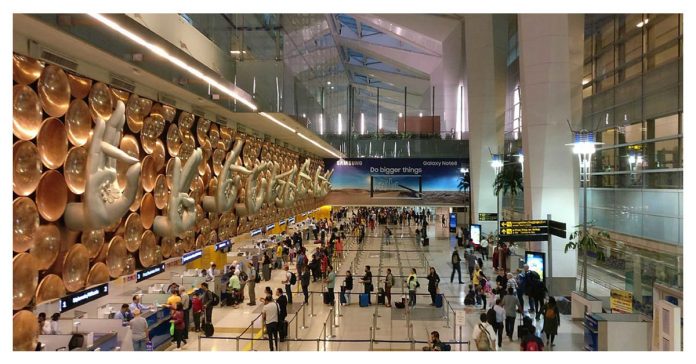The date of February 18th, 1911, would seem like any other day if spoken out of context. However, most people are unaware that on that day, history was created when the first commercial aircraft in India took off from Allahabad with a shipment of airmail. India’s civil aviation has gone a long way since then, and it is currently the world’s third-largest aviation market! Approximately 139 million passengers flew through India in 2018. India has 22 national airlines and 132 airports at the moment. Integrated transportation hubs have multi-modal connectivity to their respective city centers, runways, and terminals, the largest and busiest airports.
In the last several years, Indian aviation has risen by leaps and bounds, making it one of the world’s major civil aviation sectors. Every year, more than 120 million people buy domestic flight tickets. When foreign travelers are factored in, the figure rises to more than 180 million. World-class airports, which are among the greatest and busiest in the world, cater to these travelers. Take a peek at India’s busiest airports.

India’s busiest airports as listed by Passenger Traffic
Indira Gandhi International Airport (DEL)
The Indira Gandhi International Airport, which serves the National Capital Region, is the world’s 12th busiest and India’s busiest airport. In 2018, the aviation hub served more than 69 million passengers, outnumbering airports in Guangzhou, Dallas/Fort Worth, and Singapore. The airport has three runways, one of which is the longest runway in the nation, spanning 4430 feet. There are three terminals at IGI Airport. Furthermore, the airport is recognized as the largest in India.
Chhatrapati Shivaji International Airport (BOM)
Chhatrapati Shivaji International Airport is India’s second busiest airport, with around 50 million people each year. Airports Council International recently awarded it the top airport in Asia-Pacific for Customer Experience with over 40 million passengers, beating both Shanghai Pudong International Airport and the world-famous Singapore Changi Airport. Among the most recent changes in the Jaya He GVK New Museum opening at the T2 terminal. This museum contains approximately 5000 exhibits highlighting India’s airport history.
Kempegowda International Airport (BLR)
Bangalore, the state capital of Karnataka, is a popular destination for both business people and visitors. As a result, it’s no wonder that Kempegowda International Airport, which serves the city, is one of India’s busiest. In 2018-2019, more than 33 million passengers booked flights to or from Kempegowda International Airport. It also serves the world’s biggest airplane, the Airbus A380. The airport is also undergoing construction to increase its capacity. The airport is connected to Bangalore by NH 44.
Chennai International Airport (MAA)
Chennai International Airport is the country’s fourth busiest international airport. It was one of the first domestic airports in India. Flights arrive from nearly every major Indian city, including Bangalore, Ahmedabad, Guwahati, Hyderabad, Kolkata, Mumbai, and New Delhi. Flights link Chennai to foreign destinations like Abu Dhabi, Hong Kong, Kuala Lumpur, Dubai, Bangkok, and Colombo. In 2017, the Chennai Airport served over 20 million passengers. The airport has its station on the Chennai Metro network to provide access to the city center.
Netaji Subhas Chandra Bose International Airport (CCU)
Kolkata is served by Netaji Subhas Chandra Bose International Airport, India’s largest airport in the east. It is India’s sixth busiest national airport, with around 20 million passengers in 2017-2018. It received the Airport Council International’s Best Improved Airport Award for two years in a row, in 2014 and 2015. A large number of people who travel to Northeast India also buy inexpensive flight tickets to Kolkata.
Rajiv Gandhi International Airport (HYD)
The next name on our list of India’s busiest airports is Rajiv Gandhi International Airport, which serves Hyderabad. Hyderabad is famous among business people for its vibrant information technology industry and visitors for its rich cultural history. During the fiscal year 2017-2018, more than 18 million passengers entered or departed from the Hyderabad airport. The airport village, located beyond the arrivals area, is a unique feature of the Rajiv Gandhi International Airport, where transit passengers may visit their family and friends during their stopover.
Cochin International Airport (COK)
Cochin International Airport is located in the Kerala state of Kochi or Cochin. It was the first airport in India to be built using the PPP (public-private partnership) model, with financing provided by over 10,000 non-resident Indians from approximately 30 countries. While Kerala has four international airports, Cochin International Airport remains highly demanded and is one of the busiest in the country. It is India’s first airport that is entirely powered by solar energy. Colombo, Bangkok, Riyadh, Singapore, Kuwait, Doha, Muscat, Bahrain, Dammam, Jeddah, Dubai, Kuala Lumpur, and Sharjah are the international destinations served by this airport.
Sardar Vallabhbhai Patel International Airport (AMD)
Ahmedabad is Gujarat’s capital and biggest city. As a result, it is not surprising that Sardar Vallabhbhai Patel International Airport has risen to the top of India’s busiest airports list. Every year, over 10 million passengers depart from or arrive at Ahmedabad airport. Transit passengers may unwind at the airport’s two luxurious lounges.
Pune Airport (PNQ)
Established by the Royal Air Force as an airfield, Pune Airport is India’s eighth busiest airport, receiving about 8 million passengers in FY 2017-2018. The airport’s passenger traffic is expected to skyrocket as Pune’s importance as a commercial and intellectual hub grows.
Dabolim Airport (GOI)
Goa, the land of sea, sand, and sun, is India’s ideal party destination. As a result, crowds of foreign and local tourists book low-cost flights and Goa hotels.
As a result, these are India’s busiest international and local airports. With India’s aviation sector expanding rapidly, yearly passenger traffic at these airports is expected to increase.


